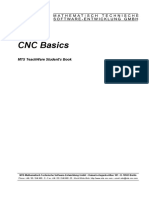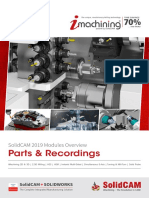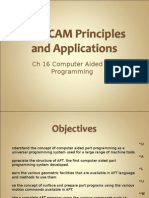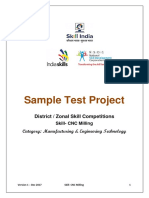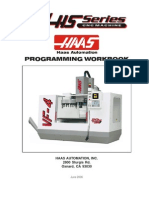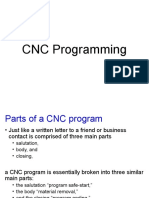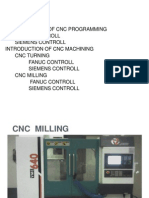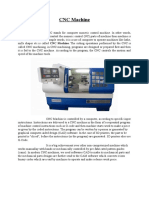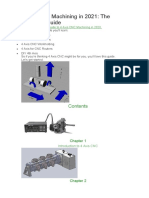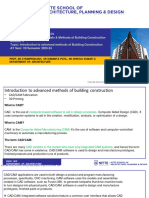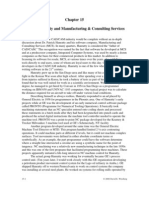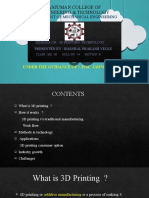100% found this document useful (1 vote)
646 views58 pagesNotes CNC Program
G-codes are preparatory codes used in CNC programming to control machine motions and actions, with common modal G-codes specifying motion type like linear, circular, and dwell time. Modal G-codes remain active until changed by another G-code, while non-modal codes perform a single action. Common G-codes used in 3-axis milling include G00 for rapid positioning, G01 for linear cutting moves, and G02/G03 for clockwise and counterclockwise circular cuts.
Uploaded by
zairulCopyright
© © All Rights Reserved
We take content rights seriously. If you suspect this is your content, claim it here.
Available Formats
Download as PDF, TXT or read online on Scribd
100% found this document useful (1 vote)
646 views58 pagesNotes CNC Program
G-codes are preparatory codes used in CNC programming to control machine motions and actions, with common modal G-codes specifying motion type like linear, circular, and dwell time. Modal G-codes remain active until changed by another G-code, while non-modal codes perform a single action. Common G-codes used in 3-axis milling include G00 for rapid positioning, G01 for linear cutting moves, and G02/G03 for clockwise and counterclockwise circular cuts.
Uploaded by
zairulCopyright
© © All Rights Reserved
We take content rights seriously. If you suspect this is your content, claim it here.
Available Formats
Download as PDF, TXT or read online on Scribd
/ 58








